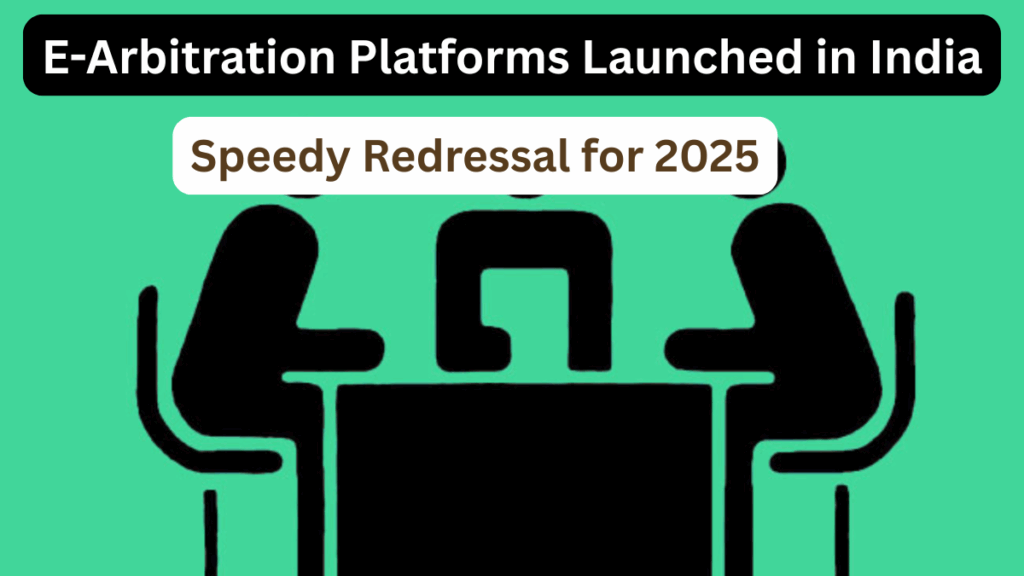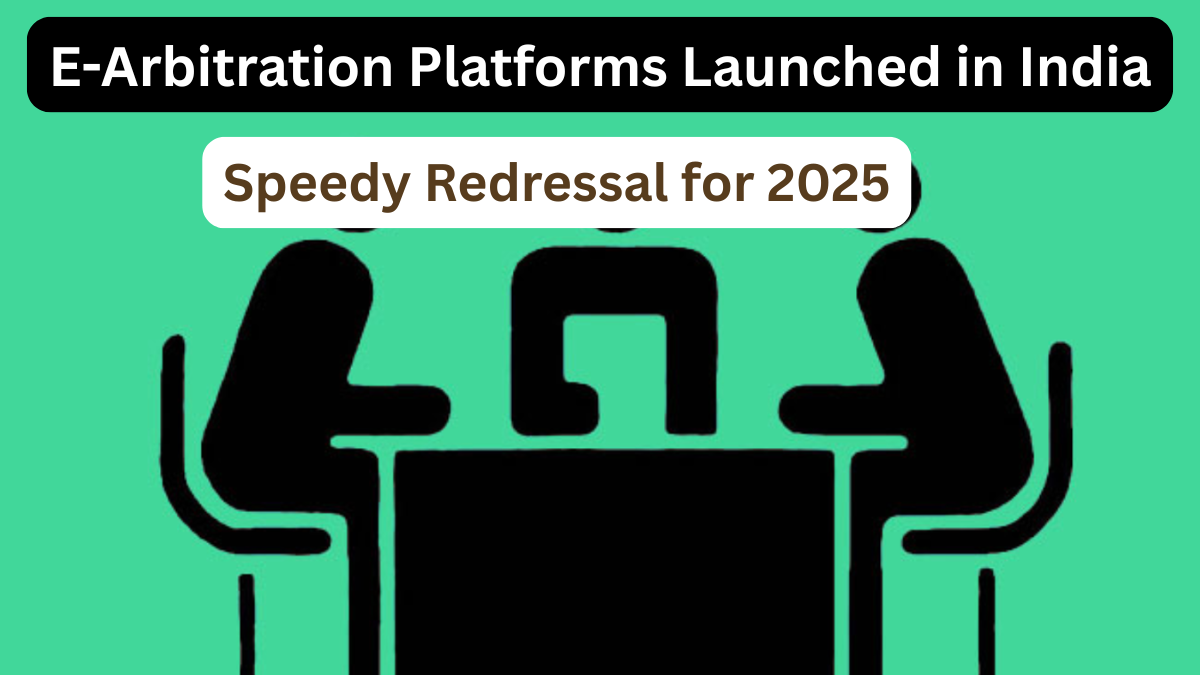India is stepping into a new era of digital justice with the launch of E-Arbitration Platforms. As we enter 2025, these platforms aim to streamline the legal process, offering faster and more efficient Online Dispute Redressal mechanisms.
If you’ve ever been caught in a long legal battle, you know how exhausting it can be. These new E-Arbitration platforms could change that experience entirely.

What is E-Arbitration?
E-Arbitration, also known as Electronic Alternative Dispute Resolution (E-ADR India), allows parties to resolve disputes online through arbitration proceedings. This digital transformation is a part of India’s push to make justice more accessible, cost-effective, and time-sensitive.
Key Features of E-Arbitration Platforms
Here’s what makes E-ADR India a game-changer in 2025:
-
100% Online Process: Filing, hearing, and judgment happen digitally
-
Time-Saving: Reduces average case resolution time drastically
-
Paperless Documentation: All records are stored securely in cloud-based systems
-
Cost-Effective: No physical infrastructure or travel expenses
-
Legally Binding: Awards from E-Arbitration carry legal weight like traditional courts
Who Can Use It?
This platform is ideal for:
-
Businesses: B2B contract disputes
-
Startups & MSMEs: Fast conflict resolution without halting operations
-
Consumers: E-commerce or service-related grievances
-
Legal Professionals: Arbitrators, mediators, and legal advisors
Comparison: Traditional Arbitration vs. E-Arbitration
| Feature | Traditional Arbitration | E-Arbitration (E-ADR India) |
|---|---|---|
| Location | Physical Hearings | Virtual Hearings |
| Time to Resolve | 6–18 months | 30–90 days |
| Documentation | Paper-based | Cloud-based & Digital |
| Accessibility | Limited | Pan-India & Global |
| Cost | Higher (venue, travel, etc.) | Lower |
| Flexibility | Fixed schedules | On-demand access |
How Does Online Dispute Redressal Work?
The process under Online Dispute Redressal through E-ADR India is simple:
-
Initiation: File a dispute on the platform
-
Arbitrator Assignment: A neutral arbitrator is appointed digitally
-
Hearing: Conducted via video conference
-
Evidence Submission: Upload supporting documents online
-
Award Issuance: Decision is given and digitally signed
Why India Needs E-ADR in 2025
India’s legal system is overwhelmed with pending cases—over 5 crore across various courts. By adopting Online Dispute Redressal, India aims to:
-
Reduce court backlogs
-
Promote ease of doing business
-
Ensure speedy justice
-
Encourage legal inclusion in rural areas
Government & Private Partnerships
Several platforms are operational or being piloted under public-private collaborations:
-
ODR India Foundation
-
SAMA
-
AGAMI Network
-
Private LegalTech startups
These platforms follow the guidelines laid down under the Arbitration and Conciliation Act, making their processes transparent and legally sound.
FAQs
Q1. Is E-Arbitration legally valid in India?
Yes, awards granted via E-Arbitration are valid under the Arbitration and Conciliation Act, 1996, and carry the same legal weight as physical arbitration.
Q2. What types of disputes can be resolved through E-ADR India?
Mostly commercial, consumer, property, and employment-related disputes can be addressed. Criminal cases are excluded.
Q3. Can individuals with no legal background use Online Dispute Redressal platforms?
Absolutely. These platforms are designed to be user-friendly and often provide case managers or guidance for laypersons.
Q4. How secure are these digital platforms?
Most E-ADR India platforms use encrypted connections, two-factor authentication, and secure cloud storage to ensure data safety.
Final Thoughts
The launch of E-Arbitration Platforms in 2025 is a significant move toward a more efficient legal ecosystem in India. Whether you’re a business owner, consumer, or professional, Online Dispute Redressal through E-ADR India could save you time, money, and stress.
India’s justice system may finally be catching up with the speed of the internet—and it’s about time.
